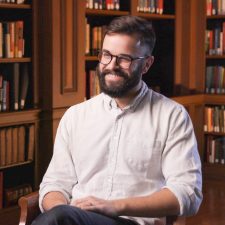Grant Wythoff’s first book – The Perversity of Things: Hugo Gernsback on Media, Tinkering, and Scientifiction (University of Minnesota Press) – explores how science fiction began among the maker movement of the 1910s. His research has been supported by postdoctoral fellowships with the Columbia Society of Fellows in the Humanities and the Penn State Center for Humanities and Information. Grant has written about wireless telegraphy, boredom, technocratic politics, television, archaeology, and the history of method in the humanities. This work has appeared in Configurations, Digital Humanities Quarterly, Grey Room, The Washington Post, The Programming Historian, and Real Life Magazine. He is currently a Digital Humanities Strategist at Princeton University.

Authors | Grant Wythoff
Articles on Amodern by Grant Wythoff
EXTENDED TECHNIQUE
New Scholarship on the Uses of Media
Ideas are products of their environments. It’s no accident that when a new paradigm of media studies appeared on the scene going by the name of “media archaeology,” scholars were in the process of turning on their first smartphones and gawking at their friends’ new tablets. Media archaeology foregrounded the paths not taken, the dead ends and minor figures of media history – files and the phonautograph, optical toys and the Dynabook. These artifacts were historical lenses through which, if only indirectly, our inscrutable new gadgets could be seen in terms of what came before.
A decade later, digital devices are an embedded part of daily life. Far clearer are the changes they have introduced to politics, relationships, and our sense of the world around us. Smartphones are no longer curiosities or unknown quantities, they form privileged relationships with their users that can be characterized by sensuousness, intimacy, virtuosity, even fetishism. Perhaps for this reason, scholars are increasingly adopting approaches to the use of media technology, from philosophies of technique, habit, and know-how, to histories of neglected ideas like psychotechnics, the useful arts, and the chaîne opératoire.
This issue of Amodern profiles some of the many ways that scholars of media, technology, and culture are extending the object-orientation of media archaeology. What are the methods, terms, and concepts that have been useful in shifting our emphasis from tools to their applications? How do we describe the use of media and at what point do these descriptions take on an interpretive dimension? Continue reading…




